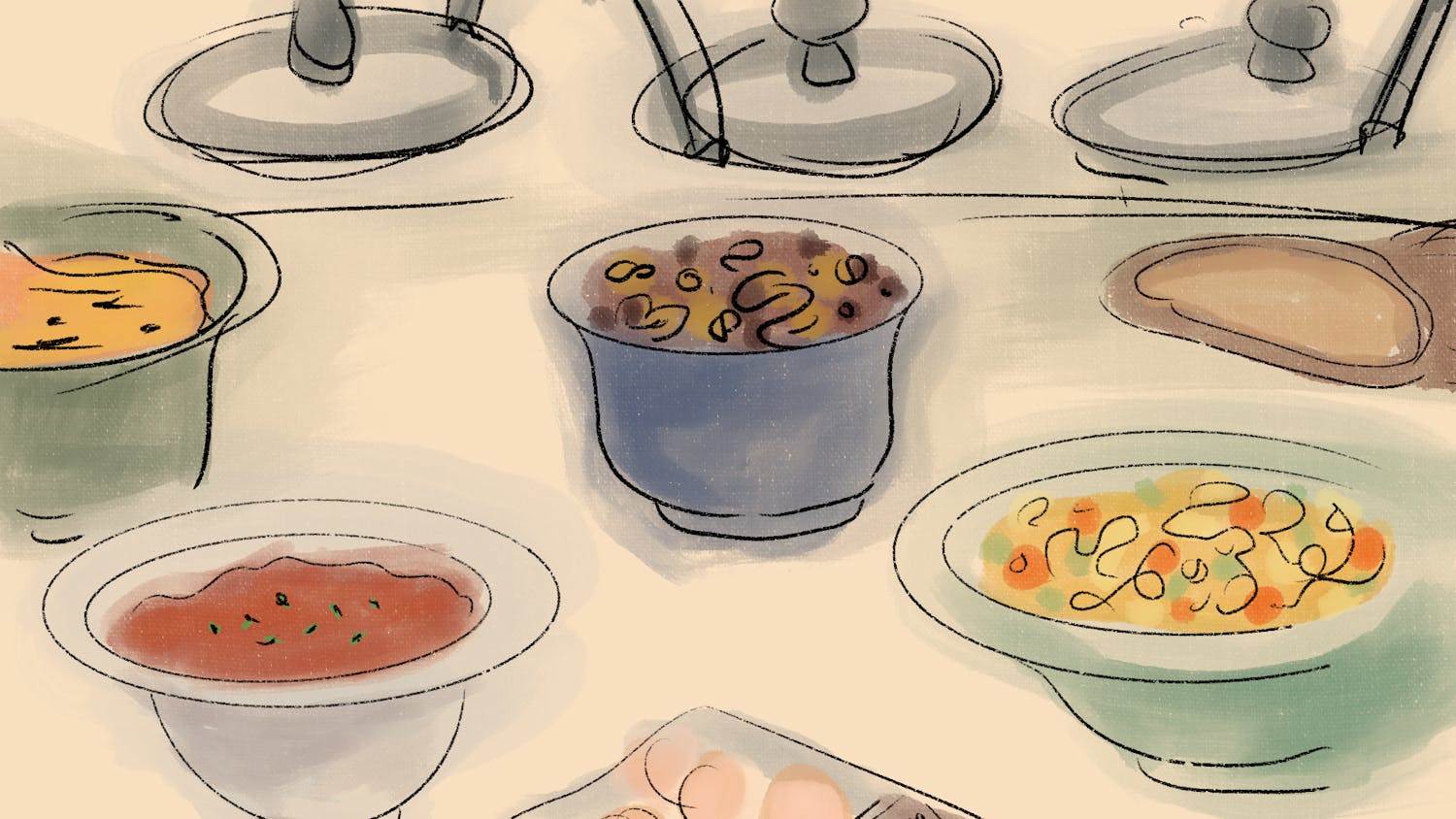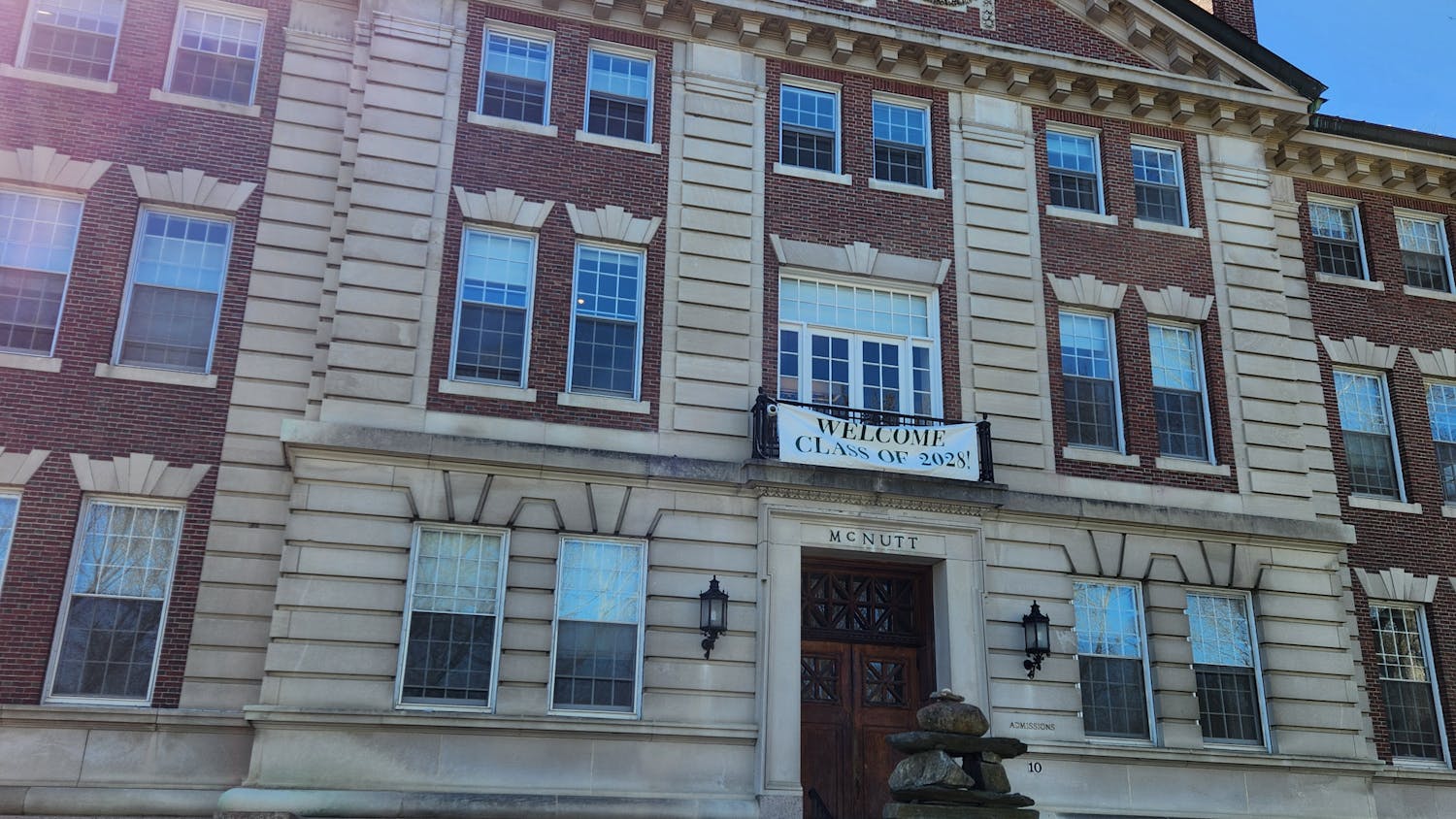The Year of the Arts, the Black Family Visual Arts Center, Sarner Underground: they're all new developments on campus. That's a fact. These new campus spots all illustrate Dartmouth's recent efforts to celebrate the arts on campus, whether in theater, film, studio art or music. That's an inference. The question, however, is whether these new spaces have had an impact on student life by further integrating the arts on campus and increasing student participation.
A moment of transparency. A lot has been happening in the arts this year and there is much more to come, and much of it falls under the umbrella of the Year of the Arts and the Hopkins Center's 50th anniversary. You could write a book on what has gone into these efforts. What I wanted to know was the extent to which these efforts have succeeded in further expanding and integrating the arts at Dartmouth.
"[It's been] a time to look backward and look forward and emphasize some of the things we do well and want to keep doing well which includes programming that reaches out to students and the community and to provide more opportunities to participate in the arts," Hop publicity coordinator Rebecca Bailey said.
While the Year of the Arts is a time to celebrate the existing arts culture at Dartmouth, it's also been a time to propel the arts forward for the future. Recent activity seems to demonstrate support for this stated aim.
"Our numbers for student attendance at events have been great," Bailey said. "I've seen a lot of enthusiasm for the kind of visiting artists we've brought in."
One of the most visible methods of arts enrichment is in student ensembles.
"We've had heightened activity with the Hop student ensembles," Bailey said. "For example, the Wind Ensemble is doing several world premieres. Most of what is going on in the Hop ensembles is not going to go away. It's just reaching a high water mark this year."
Of course, arts at Dartmouth extend beyond the Hopkins Center. The VAC has provided those involved in studio art and film with new resources and a medium in which to establish a presence on campus.
"The [VAC] has made people take arts at Dartmouth more seriously," studio art intern Bogyi Banovich '11 said. "It's making art more of a reality."
The VAC building itself has drawn attention to studio art and film at Dartmouth by its very presence.
"There are always students floating around studying or checking it out, which didn't happen before," studio art major Luca Molnar '13 said. "To some extent, it gives more visibility to our art."
Student organizations like Stories Growing Films, a student-run production company, have also been able to grow because of the VAC's new facilities, including studio space and equipment.
"I'd say we probably doubled in size since last year," the group's co-founder and co-president Alex Stockton '15 said. "I think just having a new building and having the school seem to support the arts gets more people thinking about it and trying something new go to a film, take a class, join our club."
Sarner Underground is another way that expansion has attracted more students to the arts on campus, mainly via student groups like Friday Night Rock.
"Increased attendance is wonderful for what we're trying to do as a group because we want to expose more people to music that's different from what you hear on the radio music that's up and coming, local and brings a diversity to arts culture on campus," FNR general manager Alexis Monroe '13 said.
While these efforts have garnered a lot of positive energy, the future growth that Dartmouth will experience remains to be seen.
"[The Administration] also has this idea of making an Arts District on the South side of campus so that you have one area, so it's easy to go from the VAC to the museum, to see a movie," Banovich said. "It's hard to see because it's so early on, but it's good that it's getting more Dartmouth press than other areas. I think it's working. It's only going to lead to more people wanting to work in these spaces."
Still, there is room for growth in student participation in the arts.
"It's an ongoing process it's figuring out how they make students aware of the possibilities and tailoring it to students' schedules so that there really are students going," Bailey said.
On one hand, there is increased room for student attendance at performances.
"It's my hope that more students will go see [student] groups, because they're really talented Dartmouth students, the tickets are cheap and it blows your mind that your peers are that good," Hop Student Relations Advisor Serena Nelson '12 said.
But student attendance also falls short at performances that don't feature big names.
"As house manager, I see how 98 percent of the audience for most shows is the Hanover community," Amber Porter '14 said "The point is to get students to appreciate art, but I'm not sure how well it's working."
Additionally, students currently involved in the arts hope that their peers who have yet to use the new resources will find a way to do so.
"I'm trying to get people to realize how much there is available to them, and that environment is slowly building," Stockton said. "You don't have to take a film class to be involved in the film community and help it grow."
Of course, one of the best ways to spread engagement in the arts is by word of mouth.
"You can always make your own decisions, but you'll be more driven to take a class that's recommended by a peer or when you've heard great things about a professor," Banovich said.



